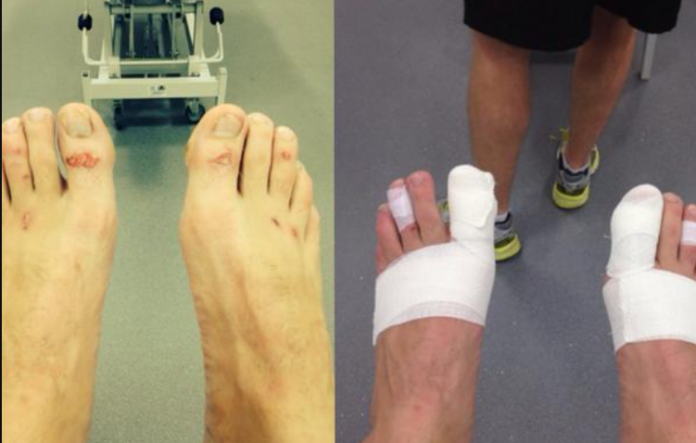
If you train BJJ you probably know what mat burn is. It’s that painful red mark on your skin that you get after sliding or dragging on the mat. While it may not seem like a big deal at first, it can be very uncomfortable and sometimes even dangerous if you don’t take care of it properly.
Mat burn is a type of friction burn that can expose your skin to germs and parasites that live on the mats. This can lead to infections such as staph, ringworm, or impetigo, which can ruin your health and your training.
That’s why you need to know how to prevent and treat mat burn effectively. Time to learn how!
What is a Mat Burn?
Mat burn is a type of abrasion or friction burn that occurs when bare skin rubs against a rough surface, BJJ mats being the perfect example of one. It is similar to a carpet burn or a rope burn, which are caused by different materials to mats.
In fact, even different types of surfaces in Jiu-Jitsu mats can cause mat burn, regardless if they are smooth or textured.
Skin burns typically affect the outermost layer of your skin (the epidermis), but they can also damage the middle layer (dermis) or even the inner layer in severe cases. The symptoms of mat burn include:
- Redness
- Swelling
- Pain
- Blistering
- Rawness
Mat burns can affect any part of your body that comes in contact with the mat, but it is most common on the feet, knees, elbows, and hands. Toes mat burn is also very common. These are the areas that are most exposed to skin rubbing during Brazilian Jiu-Jitsu training, particularly without the Gi.
What Does Mat Burn Look Like?
Mat burn usually looks like a reddish or brownish patch of skin that may be swollen, blistered, or raw. It may have a circular or oval shape that follows the rough texture of the mat.
The size and depth of mat burn depend on the force and duration of the friction as well as on individual factors like skin thickness and sensitivity.
Sometimes, mat burns may also have dirt, dust, or fibers from the mats embedded in the wound. This can make it harder to clean and significantly more prone to infection.
How to Treat Mat Burn
Mat burn is usually minor and heals on their own within a week without scarring. However, you need to treat it properly to avoid complications such as infection, pain, or irritation.
You can quite easily treat mat burn at home, as long as it is not severe. A simple way to soothe burns is to do the following:
- Remove any clothing and jewelry from the affected area. This will prevent further damage and reduce swelling.
- Cool your burn by placing it under running water that’s either cool or room temperature for up to 15 minutes. This will reduce inflammation and pain.
- Wash your burn gently with soap and cold water or antiseptic wipes removing any and all dirt, dust, or fibers from the wound and preventing infection.
- Apply ointment to your burn after cleaning it. The ointment can help your burn by providing pain relief, keeping it moist, and preventing infection.
- Cover your burn with a bandage or dressing after applying ointment to protect your wound from bacteria and irritation.
- Change your dressing at least once a day and whenever it gets dirty or wet.
- Monitor your wound for signs of infection, such as redness, swelling, pus, or fever. If you notice any of these signs, consult a doctor as soon as possible.
- Avoid scratching or picking at your wound, as this can delay healing and cause scarring.
What Is The Best Ointment For BJJ Mat Burns?
There are many ointments that you can use for mat burns from the mats. Some of the most effective options include:
- Aloe vera gel is a natural extract with anti-inflammatory and soothing properties.
- Petroleum jelly, which creates a protective barrier and prevents moisture loss.
- Antibiotic creams, such as bacitracin, polysporin, neosporin, or mupirocin, to gett rid of all the bacteria and reduce inflammation.
- Vitamin E cream, to promote healing and prevent scarring (for minor burns).
- Sudocrem contains zinc oxide and other ingredients that protect the wound from irritants.
You can find these ointments over-the-counter or with a prescription at your local pharmacy.
Apply them in a thin layer of ointment after cleaning your wound as described above and before covering it with a liquid bandage or dressing.
That said, you should avoid using ointments that contain alcohol, hydrogen peroxide, or fragrance, as they can cause irritation and delay healing. Also avoid using butter, oil, lotions, or creams that are not meant for burns, as they can trap heat and worsen your condition.
Does Vaseline Help For Mat Burns?
Yes, Vaseline (a.k.a. petroleum jelly) can help with mat burn by creating a protective barrier over your wound and preventing moisture loss2. This reduces pain and itching by keeping your wound lubricated and preventing it from sticking to your dressing.
Vaseline is widely available, inexpensive, and safe to use for most people with mat burns. You should change your dressing at least once a day and remove the Vaseline gently with warm water and soap.
Keep in mind that you must avoid using Vaseline if you are allergic to it or have an open wound that is bleeding or oozing.
How To Prevent Mat Burn
The best way to prevent mat burn is to avoid getting it in the first place. This, however, usually proves challenging for people who are not used to the friction of the mats.
While you getting mat burn is usual in training, or more likely, your first tournament, there are simple ways to avoid mat burn.
Here are a few things experienced BJJ athletes and wrestlers use to prevent mat burn:
- Wear proper clothing that covers your skin and reduces friction, such as a rash guard, spats, knee pads, elbow pads, and Gis. These garments can protect your skin from direct contact with the mat and prevent abrasions.
- Train on mats that are made of smooth and durable materials and are regularly cleaned and disinfected.
- Apply moisturizer or petroleum jelly to your skin before BJJ training to keep it hydrated and lubricated. This can reduce the friction and dryness of your skin and prevent blisters. Be wary of stepping on the mats with a freshly applied layer of the above, though, as it can leave visible stains depending on the color of the mats.
- Avoid excessive sliding or dragging on the mats whenever possible. Reducing the force and duration of excessive friction helps prevent mat burn, but it will not come natural to you if you are a beginner, at least not until you master some key grappling movements first.
How Long Does It Take For Mat Burn To Heal?
The healing time of mat burn depends on these factors:
- The severity and size of your wound;
- The location and depth of your wound;
- The cleanliness and care of your wound;
- Your general health and immune system.
Generally speaking, mat burn can heal within a week without scarring if it is minor and treated properly. However, it may take longer if it is more severe or infected.
Depending on the severity of the burn, there are different timelines for complete healing:
- Mild mat burn usually heals within a few days to a week.
- Moderate mat burn will take one to two weeks to heal.
- A severe mat burn may take two to four weeks or longer to heal and will require you to see a doctor.
To speed up the healing process, you should follow the treatment steps mentioned above and keep your wound clean, moist, and protected. You should also avoid going to training, which is usually the part most people mess up. Returning to the mats with unhealed burn will only worsen the situation.
Should You Train With Mat Burn?
The answer to this question depends on how bad your mat burn is and how comfortable you feel with it. Generally speaking, you should avoid training with mat burn, particularly if it is:
- Painful or irritating;
- Bleeding or oozing;
- Infected or inflamed;
- Large or deep.
Training with a mat burn presenting as one of the above (or similar)can worsen your injury and increase your risk of infection. It can also affect your performance given that you’ll likely experience pain, irritation, bleeding, or uncomfortable sticking when you roll.
Therefore, you should take a break from training until your mat burn heals completely or at least cover it with a protective layer of clothing or bandage.
How Do You Tape Your Feet For Mat Burn?
If you have feet mat burn, you may want to tape them before training to protect them from friction and irritation. Proper taping also helps you avoid scraping off the scabs and reopening the wound.
Taping is quite easy and starts with the same initial treatment steps we covered above:
- First, clean and dry your feet before applying tape. This will prevent potential skin infections and ensure the tape sticks well.
- Next, use athletic tape that is flexible and breathable. Your feet will need to move naturally and it is important to prevent moisture buildup.
- Cut the tape into strips that are long enough to cover the affected area and wrap them around your foot. You may need different sizes of strips depending on where your mat burn is located.
- Then, apply the tape smoothly and evenly, trying to avoid any wrinkles or gaps. This will create a secure seal and prevent dirt or sweat from entering the wound.
- Overlap the tape slightly to cover the entire wound and prevent it from peeling off. You can also use a cross pattern or a figure-eight pattern to reinforce the tape.
- Avoid taping too tightly or loosely, as this can restrict blood flow or slip off. If you can’t wiggle your toes and feel comfortable with the tape on, it is too tight.
- Finally, remember to change the tape regularly and remove it carefully. You should change the tape at least once a day or whenever it gets dirty or wet. Remove it gently using warm water and soap to help the process and avoid pulling or tearing the tape.
Conclusion
Mat burn is a common but preventable and treatable injury that can affect anyone who trains on mats, especially new practitioners. It is caused by friction between your skin and the mat, resulting in a first-degree burn that can be painful and prone to infection.
To prevent mat burn, you should wear proper clothing that covers your skin, use high-quality mats that are clean and smooth, apply moisturizer or petroleum jelly to your skin before training, and avoid excessive sliding or dragging on the mats.
Treating mat burn quickly requires cooling, cleaning, and dressing your wound as soon as possible, followed by the application of ointment to provide pain relief and prevent infection. Covering your wound with a bandage or dressing will help you heal faster.


![Darce Choke Encyclopedia – Origins, Mechanics and Variations [2025] BJJ, choke, Brabo, BJJ Darce Choke, D'arce Choke, Darce BJJ Choke](https://bjj-world.com/wp-content/uploads/2017/11/JungPoirierLeeYahoo-218x150.jpg)







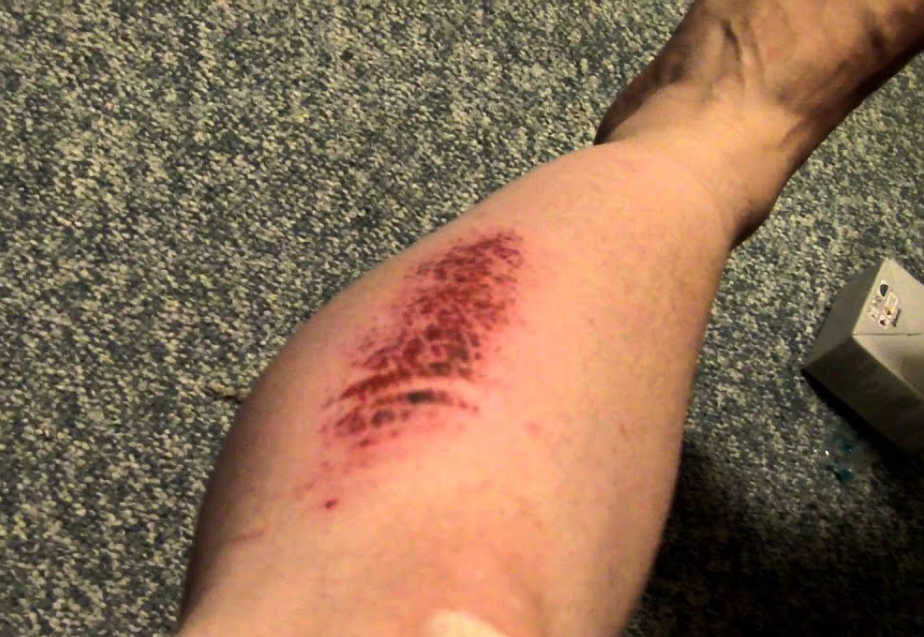
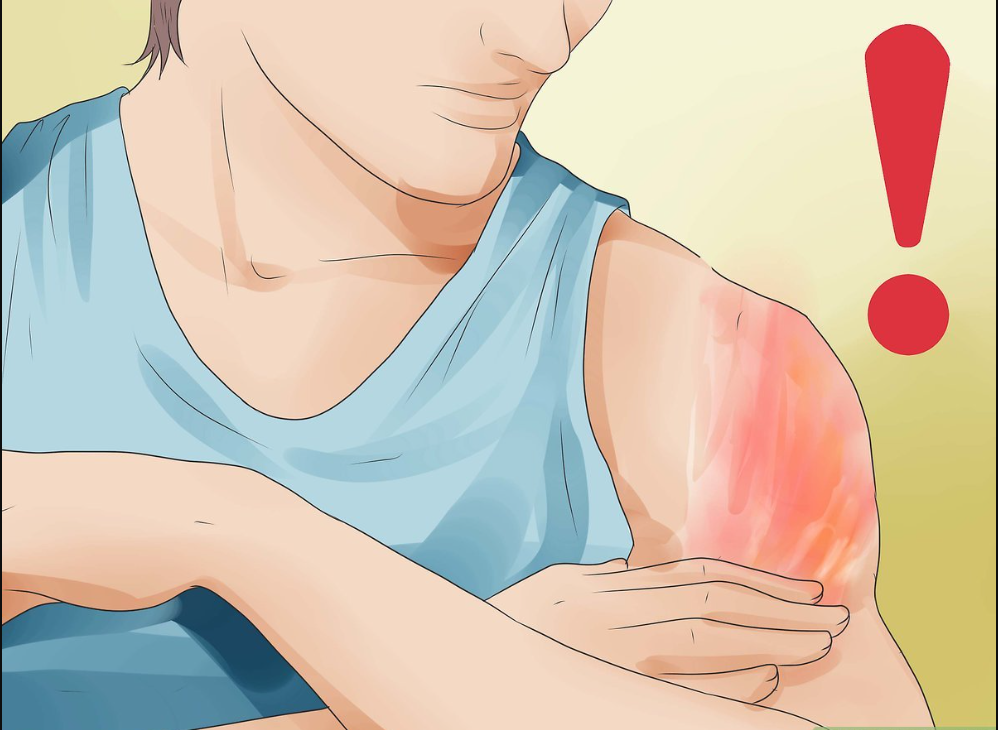
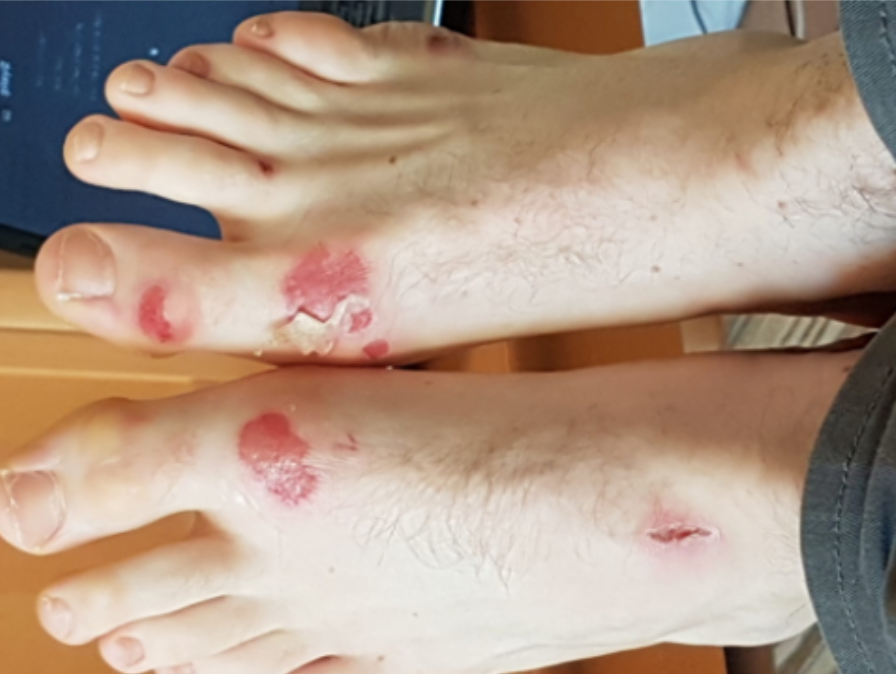
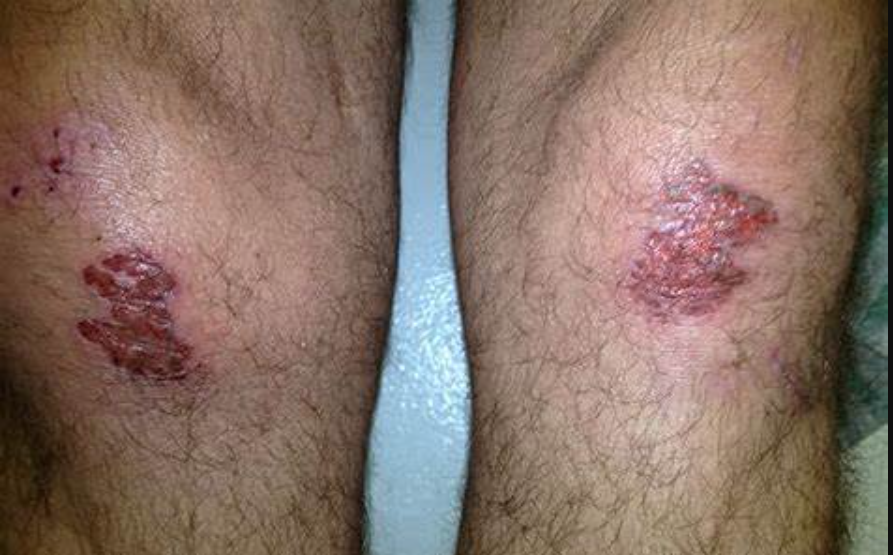
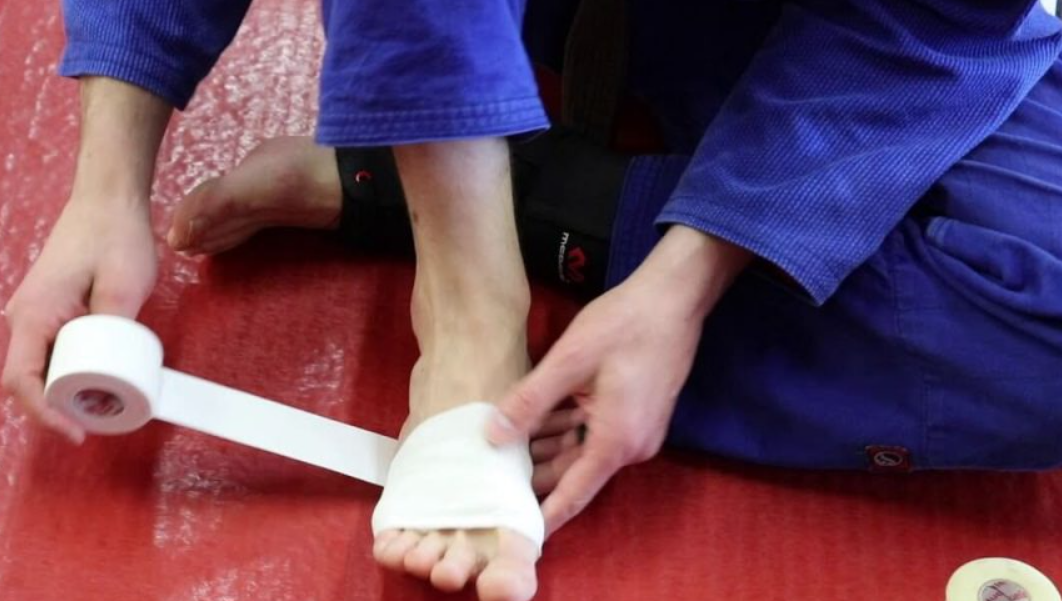


![Countering with Crab Ride Anthony Budion DVD Review [2025] Countering with Crab Ride Anthony Budion DVD Review](https://bjj-world.com/wp-content/uploads/2025/03/countering-with-crab-ride-anthony-budion-dvd-review-218x150.png)
![Closet Closed Guard Craig Jones DVD Review [2025] Closet Closed Guard Craig Jones DVD Review](https://bjj-world.com/wp-content/uploads/2025/03/closet-closed-guard-craig-jones-dvd-review-218x150.png)
![Xanadu Back Takes Levi Jones-Leary DVD Review [2025] Xanadu Back Takes Levi Jones-Leary DVD Review](https://bjj-world.com/wp-content/uploads/2025/03/xanadu-back-takes-levi-jones-leary-dvd-review-218x150.png)

![No-Gi Grapplers Guide To Front Headlock Joel Bane DVD Review [2025] No-Gi Grapplers Guide To Front Headlock Joel Bane DVD Review](https://bjj-world.com/wp-content/uploads/2025/03/no-gi-front-headlock-joel-bane-dvd-review-218x150.png)


![Closet Closed Guard Craig Jones DVD Review [2025] Closet Closed Guard Craig Jones DVD Review](https://bjj-world.com/wp-content/uploads/2025/03/closet-closed-guard-craig-jones-dvd-review-100x70.png)
![Leg Lock Stock And Barrel Taylor Pearman DVD Review [2025] Leg Lock Stock And Barrel Taylor Pearman DVD Review](https://bjj-world.com/wp-content/uploads/2025/03/leg-lock-stock-and-barrel-taylor-pearman-dvd-review-100x70.png)

![Reverse Arm Bar System Andrew Kerfoot DVD Review [2024] Reverse Arm Bar System Andrew Kerfoot DVD Review](https://bjj-world.com/wp-content/uploads/2024/10/reverse-arm-bar-system-andrew-kerfoot-dvd-review-100x70.png)
![Xanadu Back Takes Levi Jones-Leary DVD Review [2025] Xanadu Back Takes Levi Jones-Leary DVD Review](https://bjj-world.com/wp-content/uploads/2025/03/xanadu-back-takes-levi-jones-leary-dvd-review-100x70.png)
![The Empty Half Guard Michael Currier DVD Review [2025] The Empty Half Guard Michael Currier DVD Review](https://bjj-world.com/wp-content/uploads/2025/03/empty-half-guard-michael-currier-dvd-review-100x70.png)

![Full Guard Formula James Booth DVD Review [2025] Full Guard Formula James Booth DVD Review](https://bjj-world.com/wp-content/uploads/2025/02/full-guard-formula-james-booth-dvd-review-100x70.png)

![Shoulder Lock Mastery Zach Green DVD Review [2025] Shoulder Lock Mastery Zach Green DVD Review](https://bjj-world.com/wp-content/uploads/2024/12/shoulder-lock-mastery-zach-green-dvd-review-100x70.png)
![Tiny Woman Guide To The Guard Ann Kneib DVD Review [2024] Tiny Woman Guide To The Guard Ann Kneib DVD Review](https://bjj-world.com/wp-content/uploads/2024/11/tiny-woman-guide-to-the-guard-ann-kneib-dvd-review-100x70.png)
![Spider and Lasso Guard Jared Welman DVD Review [2025] Spider and Lasso Guard Jared Welman DVD Review](https://bjj-world.com/wp-content/uploads/2025/01/spider-and-lasso-guard-jared-welman-dvd-review-100x70.png)



![Dima Murovanni Kill The Collar Tie BJJ Trendsetters DVD Review [2024] Dima Murovanni Kill The Collar Tie BJJ Trendsetters DVD Review](https://bjj-world.com/wp-content/uploads/2024/09/dima-murovanni-kill-the-collar-tie-dvd-review-100x70.png)
![Position And Submission Escapes Craig Funk DVD Review [2025] Position And Submission Escapes Craig Funk DVD Review](https://bjj-world.com/wp-content/uploads/2025/02/position-and-submission-escapes-craig-funk-dvd-review-100x70.png)
![Underhooks With Uncle Jeff Glover DVD Review [2025] Underhooks With Uncle Jeff Glover DVD Review](https://bjj-world.com/wp-content/uploads/2025/02/underhooks-with-uncle-jeff-glover-dvd-review-100x70.png)
![Lockdown Quickstart Guide Cameron Mellott DVD Review [2025] Lockdown Quickstart Guide Cameron Mellott DVD Review](https://bjj-world.com/wp-content/uploads/2025/03/lockdown-quickstart-guide-cameron-mellott-dvd-review-100x70.png)
![The Buchecha Gi Takedown System DVD Review [2025] The Buchecha Gi Takedown System DVD Review](https://bjj-world.com/wp-content/uploads/2025/01/buchecha-gi-takedown-system-dvd-review-100x70.png)
![Wristlocks From The Top Pete Letsos DVD Review [2025] Wristlocks From The Top Pete Letsos DVD Review](https://bjj-world.com/wp-content/uploads/2025/01/wristlocks-from-the-top-pete-letsos-dvd-review-100x70.png)
![Jeff Glover DVD Bundle Review: Chokin’ Around With Uncle Jeff [2024] Jeff Glover DVD Bundle Review: Chokin' Around With Uncle Jeff](https://bjj-world.com/wp-content/uploads/2024/10/jeff-glover-dvd-bundle-review-chokin-around-100x70.png)

![Welcome To The Darce Side Travis Moore DVD Review [2025] Welcome To The Darce Side Travis Moore DVD Review](https://bjj-world.com/wp-content/uploads/2025/01/welcome-to-the-darce-side-travis-moore-dvd-review-100x70.png)
![The Whole Omoplata Enchilada Lyanne Perez DVD Review [2024] The Whole Omoplata Enchilada Lyanne Perez DVD Review](https://bjj-world.com/wp-content/uploads/2024/11/whole-omoplata-enchilada-lyanne-perez-dvd-review-100x70.png)